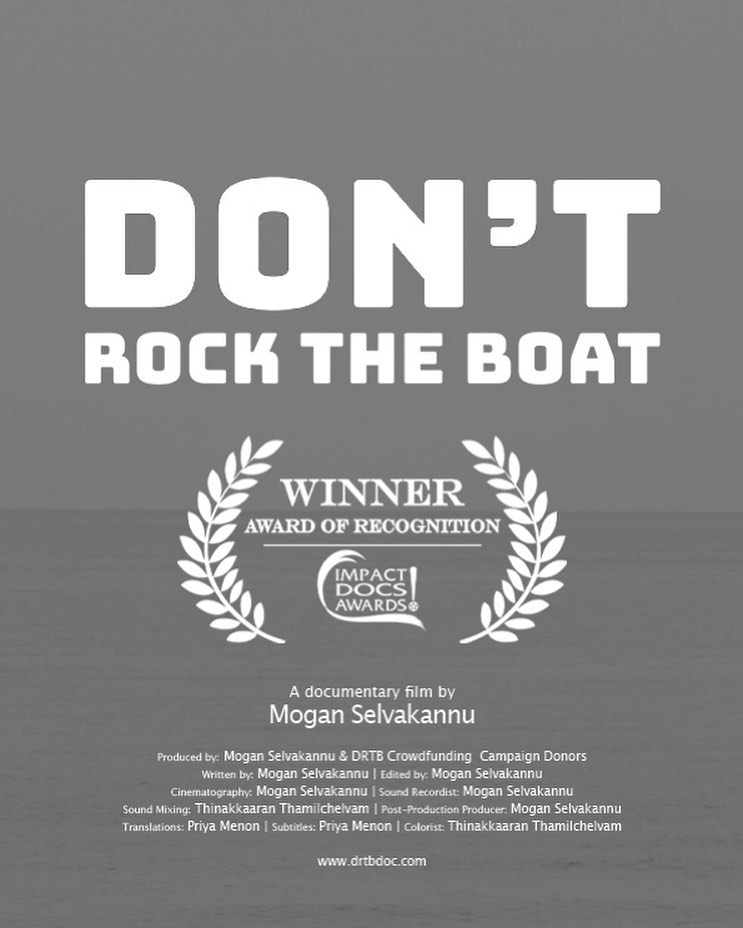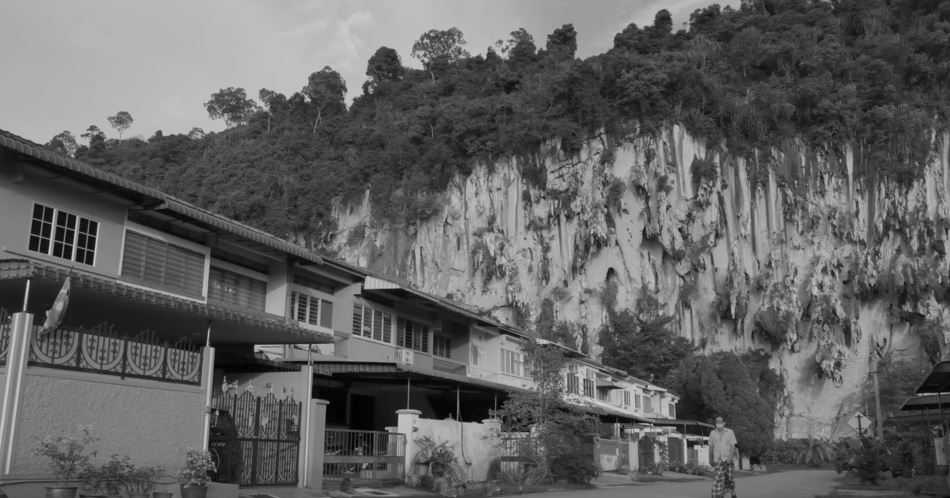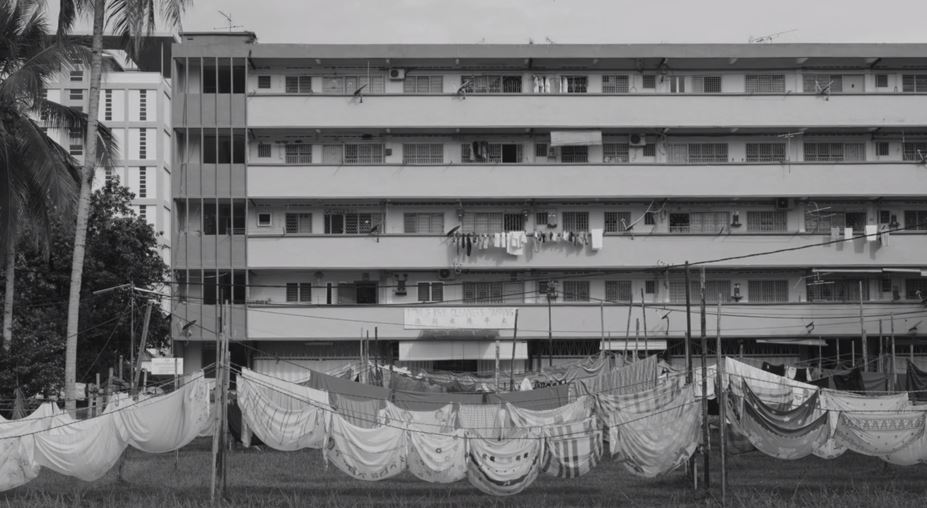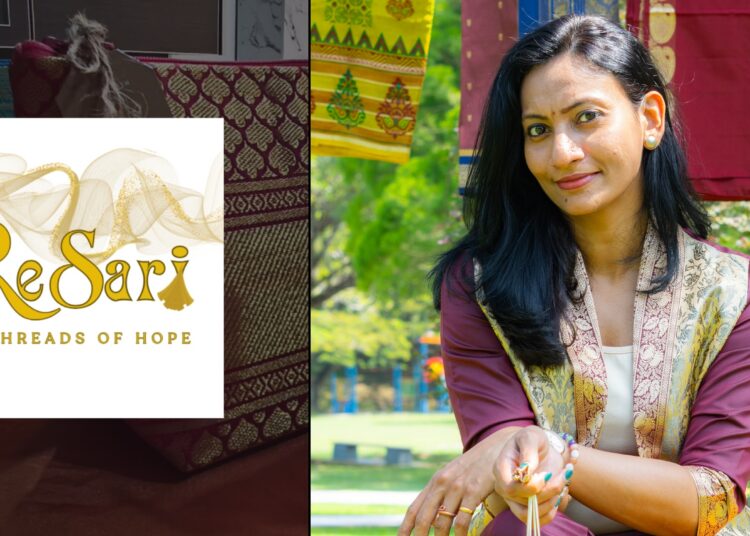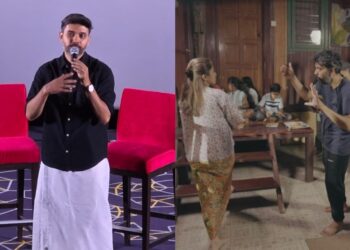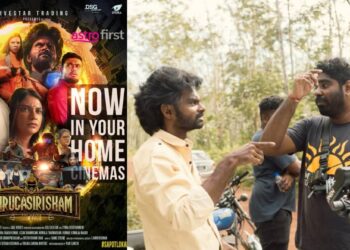Critically acclaimed documentary filmmaker Mogan Selvakannu presents his first ever documentary feature film, Dont Rock The Boat, expressing the complex emotions and thoughts Malaysian Indians have on the question of home and belonging. The project, presented in monochrome, aches with myriads of interconnected personal narratives on the question and expressions of home that many Malaysian Indians hold within themselves. While the question of home and roots had first emerged from Mogan, catalyzed by his experience studying and working abroad, the creative transformed his introspective thoughts into ones that centred the reflections of his community, which metamorphed into this momentous documentary film.
Skeletons of Empire: Colonial Residue on Post-Colonial Existence
Mogan expressed that his debut documentary film, Don’t Rock The Boat, is in a way a continuation of his previous documentary photography project, Skeletons of Empire, which focused on British Imperialism’s commodification of rubber and its effects on the descendants of indentured labourers in the aftermath of the colonial period. The genesis of that project began when Mogan was looking for portraits of his great grandfather, Singaaram, of which there were none. The only photographic evidence that remained of his ancestor were snapshots taken by colonial authorities who wielded more political control over people like Singaaram. These simple snapshots of his great grandfather expressed the cultural history of the photograph as being intertwined with the socio-political hierarchy of a colonial society. This understanding birthed the idea within Mogan about the power that the camera possessed in constructing the narrative of history, especially the narrative of people like the indentured Tamils, who have been denied a sovereign narrative for themselves for centuries now. Mogan being a descendant of his great grandfather and the colonial period as a whole gets to be, for one of the first times in history, the pioneer of his and his peoples own narratives, without the shackles and incarceration of colonial authorisation.
“I wanted to explore how communities use photography as a way of expressing themselves. The camera itself, the power of photography lies on the person behind the camera.”
Mogan details that while Skeletons of Empire shares certain themes with his latest project, Don’t Rock The Boat, the documentary film is essentially a polemic portrayal of the contemporary lives of Malaysian Indians beyond the constraints of colonialism and the plantation, placing them within the modern space of a neo-colonial Malaysia. The title for his documentary film was inspired by an episode from Comedy Court, where the Eurasian character says that one should not rock the boat to cause attention and adversity to oneself. Mogan articulated that the phrase had amused him and that it suited the subject matter of his documentary film, because the content itself dealt with the uncomfortable and unsettling subject of belonging, something that was contradictory to the lives of Malaysian Indians, who are often suffocated with alienation by the state and larger Malaysian society. He detailed how the title bore many different meanings; one such derivative is that it could come off as a warning to not stir any trouble by being too introspective or inquisitive. This is because wanting to know about oneself and one’s identity can often reveal the contradictions within the self and the state. This curiosity can deter Malaysian Indians from the passive and apathetic reality they have been lulled into, liberating them from the false belief that by living a quiet and unassuming life they can escape the harrowing truth of alienation, abandonment and afflictions.
“I wanted to explore that meaning of home – what does home mean. Is it a country, a physical building, a group of people, and all that idea.”
As for the title of the project being in English, Mogan stated that he wanted it to be in that language for the work to be more accessible to the wider global community. At the same time, by not opting to give the film a Tamil title, which is the mother tongue of most Malaysian Indians, he was creating an opportunity to highlight the ethnic and linguistic diversity of Malaysian Indians, which has often been reduced to a monolithic Tamil speaking community instead of being perceived for its depth and complexity. 
Subversive Perspectives in Monochrome
While most commercial productions of Indian cultural representation are saturated in colour and hues of vibrancy, Mogan’s directorial debut critically strays away from that tradition and creates a subversive monochrome landscape that grips attention towards the subjects of the film and their perspectives. The creative choice to present the lives of these marginalised people through monochrome carves its own visual distinction against conventional Indian aesthetic and cinematic appeal. Mogan states that the standard Indian aesthetic is an exotification of its people that distracts and deludes audiences into a false perception of what the Indian community truly is.
“I found colour to be a distraction. What monochrome does to the whole documentary is that it focuses on people’s attention to what people are talking about, rather than being distracted by the colours or the details.”
The lack of colour in Mogan’s work helps in emphasising the complex, often painful, and even ambiguous or alienated emotions of a people who have always been forgotten and sidelined in this nation. So instead of obscuring the forms of these individuals with the superficiality of vibrant visuals, Mogan instead directs the audiences to be more severe in their perceptions of the Indian community with this haunting monochrome perspective that promises to rupture generic ideas of the Indian people and the Indian aesthetic.
On Creating Archives
Mogan shares that while doing this project, he did not have much archival material to depend on that could answer the core questions of his film, as the questions he was asking have yet to be deeply explored in academia. The thoughts, emotions, and perceptions of these contemporary Malaysian Indians on the subject of home and belonging are still scarcely found elsewhere not only in the intellectual field but also in the entertainment field. However, Mogan conveyed that his own film was, in a way, an archive being actualised. It is a cinematic project that would serve the purpose of remembering and immortalising the collective consciousness of present day Malaysian Indians.
“I was looking at the whole documentary as an archive by itself. Because I was trying to make a social portrait of the community.”
Mogan had crafted the whole film to have two segments; the first would explore the myriad of opinions held by the general Malaysian Indian public, while the second segment would unfold various amounts of informed analysis of these situations presented, by social activists, politicians, writers, and academics like Mr. Janakiraaman, PSM’s Sivaraaja, DAP’s Charles Santiago, and writer Preeta Samarasan.
While the archive and academic materials directly relating to the project have indeed been scarce, Mogan noted that he had utilised several pieces of research, like John Andrew Tully’s book titled The Devil’s Milk: A Social History of Rubber, which helped with understanding the foundations of the rubber industry and the labour migration it dictated, which was crucial to grasp because it fed into the present day class and ethnic structure of Malaysia. He also emphasised that social media had become an incredibly fruitful source of information and ideas for his work, stating that one had to acquire the right perspective and mind to sieve through the surface-level content to attain substantial materials that would meaningfully contribute to creative and intellectual production. He cites Gogularaajan and Kumanavannan’s documentary project, Plantaion Life: As It Was, as a great source of inspiration for his own work, as well as praising the creators of the film for how vital and historic this creative project they are embarking on is.
Mogan shares that he wants there to be a greater wealth of knowledge among Malaysian Indians to share and implore about their own identities, creating a network of pioneering ideas that will function as shedding more light and understanding into their own consciousness and material being. He asserted that his documentary is meant to birth ruptures of questions among the Malaysian Indian community, questions that will evoke the strength to shed anxieties over truly understanding and unearthing the chasms of one’s own identity, community, and culture.
Film as a Medium
“It is extremely crucial for me to capture emotions and what they say the first time. I cant get people to reenact the thing because the moment and the emotion is fleeting.”
As for the transition from photographer to documentary filmmaker, Mogan shares that the subject matter of Dont Rock The Boat necessitated the employment of film as its primary mode of expression. He states that using the medium of film demanded more preparation than photography, as he needed to get the perfect shot for each feeling and emotion that was pronounced by the subjects of the project. While so, the transition to filmmaking is not completely divorced from Mogan’s methodological practice of photography, as much of the documentary film uses minimal movement, mimicking the stillness of photographs. In regards to the technique and aesthetics of the documentary, Mogan credits Japanese filmmaker Hiroshi Sugimoto’s influence, which guided him in creating his own visual language through this documentary. Apart from that, Mogan also cites the documentary film Brexitannia for inspiring several elements of this project.
The Future of Malaysian Art
“There is a lot of Malaysian Indian history that is gone. Has not been documented or it has been documented but its somewhere where we cannot access. I feel it is up to the Malaysian Indian artist or the community to take the initiative to explore, to do more research, to find ways to portrayal the community.”
While ardent about the integrity and importance of his own creative production, Mogan also iterated that art is an incredibly vital force that can aid communities to introspect and innovate their identities. He hopes that in the future there will be a more vibrant and inclusive Malaysian arts scene, with Malaysian Indians making a vast amount of creative contributions towards their own community and the nation at large. While acknowledging that its not mandatory, Mogan voiced his wish for Malaysian Indian creatives to explore and unearth the many stories and histories within their own communities, emphasising how there is still so much work to be done to properly archive the rapidly disappearing histories of Indians in Malaysia.
He also mentioned that it was important for the creative industry to platform new voices and expand its network of talent instead of limiting its scope to the same number of artists. Mogan believed that the state could also play an important role in building a sustainable Malaysian creative industry, one where art could be both a source of self-reflection and nation-building.
In the end, Mogan earnestly expressed that the most important thing that he has gained through this documentary is the ability to identify and acknowledge the kind of privilege he possesses to create such works. This consciousness of his is evident through the structure of the film itself, which is not a project with a singular dominating perspective of the director but instead a liberal and diverse visual of the Malaysian Indian community that comes from various ethnicities, religions, classes, and regional backgrounds. Furthermore, editing through 70 hours of footage and sitting patiently through each interview had also shaped Mogan to be a more active listener and sharper director who knows how to weave together a cohesive story through the many voices and trajectories his interviewees have taken him on. Through it all, Mogan’s labour is one that is an incredible contribution both towards the creative field and the social landscape of Malaysian Indians and Malaysia. It is truly an inspiring time to be alive among the creatives in Malaysia, where many, like Mogan, are ardently building towards a new wave of aesthetic, cultural, and social semiotics for the many people in Malaysia to become conscious of their space and history in this chaotic, contradictory, and corporal nation.
Follow us on Instagram, Facebook or Telegram for more updates and breaking news.



